So, you found pink spots on your skin. Should you worry? Maybe yes and maybe no. Read more below to know the answer and learn the common causes and treatments for pink spots on the skin.
What are pink spots on the skin? Pink spots on the skin are medically called petechiae, which appear as a result of tiny blood vessels (capillaries) rupturing and leaking blood into the skin.
The common causes of petechiae include sunburn, straining, and skin trauma. There are many treatments for red or pink spots, such as dabbing the affected area with a cotton ball or swab soaked in lemon juice.
Light red or pinkish discoloration of the skin is only a symptom of an underlying condition, which could range from mild to severe. Read on to learn more about why you have pink spots and how to get rid of the pink spots.
Also, for an excellent product that can help reduce or remove your pink spots, take a look at our top pick, the ELEMIS S.O.S Emergency Cream Intensive Moisturizer:
Click here to see it on Amazon.
10 Common Causes of Pink Spots on the Skin
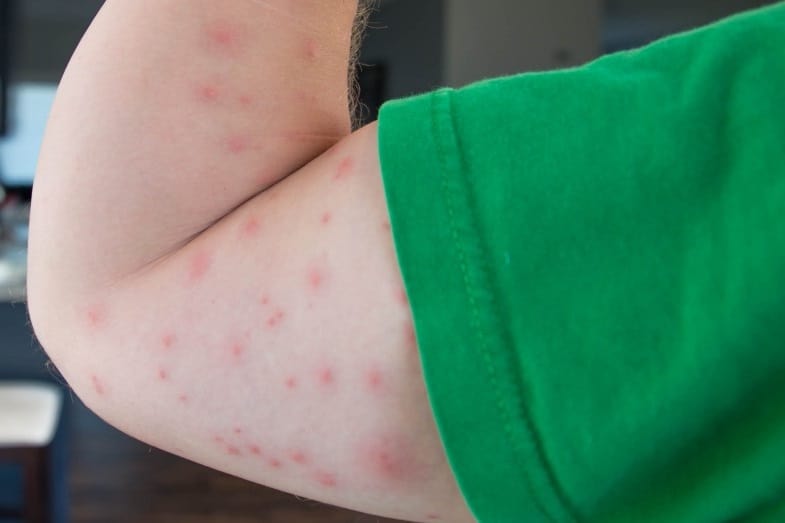
1. Discoid Eczema
Discoid eczema, also called nummular dermatitis and nummular eczema, is a group of coin-shaped spots or bumps on the skin that can be painful. On people with fair skin, these spots could appear red or pink.
The common risk factors of discoid eczema include:
- Living in a dry or cold climate
- Poor blood circulation
- Swelling of legs (edema)
- Having dry skin
- Bacterial skin infection
- Using certain medications
- Undergoing surgery
- Skin wounds, such as a scratch or insect bite
It may take weeks, months, or possibly years for discoid eczema to clear up. If you don’t receive any treatment, it could come back.
2. Hives
Another common reason for pink spots on skin, or red spots, is hives. Hives (urticaria) is an outbreak of slightly raised pink or red patches of skin. This skin condition can be severely itchy and painful.
They’re triggered by exposure to certain medications or foods, cold weather (or swimming in cold water), stress, and changes in environmental conditions.
Hives are common, but they’re not fatal. In the United States, around 15-20 percent of people will develop acute hives, which could last for a maximum of six weeks.
On the other hand, approximately 2-3 percent will develop chronic hives, which could last for more than six weeks at some point in their lives. [1]
3. Bug or Insect Bites
Unlike insect stings, bug bites seldom cause a life-threatening allergic reaction. Some lucky people won’t even react to the bites because their immune system doesn’t consider the saliva of these bugs or insects as an irritant.
Examples of insects and bugs that cause small pink spots on the skin include:
- Mosquitoes – A mosquito bite produces an itchy, pink, or red bump that’s usually harmless. Mosquitoes are more attracted to the blood or some people more than others. This is because of their blood type (type O) and the chemicals they produce in their skin, like lactic acid, which attracts these insects.
- Mites (Specifically Chiggers or Berry Bugs) – Mite bites are more uncomfortable than life-threatening. They can cause red or pink lumps or rashes, which can be extremely itchy. Fortunately, they usually clear up on their own without requiring medical attention.
- Gnats (Also Called Black Flies or Midges) – Gnat bites usually have similar features to mosquito bites. They’re small, red (or pink) bumps that can be painful and itchy.
4. Guttate Psoriasis
Guttate [GUH-tate] psoriasis is a common type of psoriasis that often begins in childhood to young adulthood (approximately age 18-25). This autoimmune disease—meaning your immune system attacks your body’s healthy cells—causes small, red, or pink patches of spots on your skin.
In the majority of people with guttate psoriasis (around 80 percent), these skin patches will permanently go away within three weeks to three months. [2] However, there’s also a possibility that it might develop into chronic and relapsing plaque psoriasis.
5. Amelanotic Melanoma
Unlike other types of skin cancer (melanoma), amelanotic melanoma doesn’t cause changes in your melanin, which is the pigment that gives your skin its color. It’s often red or light pink, almost colorless, in color. In some instances, people may experience itching.
Since it doesn’t affect skin color, this type of skin cancer is often mistaken as common skin irritation. When diagnosed and correctly treated at an early stage, the chances of survival are high.
According to a 2014 study, around 88 percent of people with amelanotic melanoma lived at least five years after the cancer diagnosis. [3]
6. Papules
Another cause for dark or light pink spots on the skin is papules. Papules, also referred to as skin lesions, are tiny (less than a centimeter in diameter), solid, raised bumps on the skin, without pus or visible fluid.
They vary in diameter (from a pinhead to less than a centimeter), texture (scaly, smooth, or thick), and color (brown, pink, purple, or red).
Examples of a papule include:
- Insect bites
- Nevi (pigmented mole)
- Warts
- Acne lesions
- Solar keratoses (patches of skin that’s crusty, dry, or scaly caused by years of sun exposure)
- Lichen planus (a common, non-infectious rash)
7. Folliculitis
Folliculitis is a very common skin condition. Folliculitis is when hair follicles—small sacs from which a hair develops—become inflamed, tender, itchy, and pus-filled. The edges of the bumps may appear pinkish or reddish.
Bacteria are the usual suspects for this type of skin infection. Sometimes, it could be due to viruses or fungi. If the bumps worsen or don’t heal fast, your doctor may prescribe meds to destroy or slow down the growth of bacteria or fungi, as well as to ease the pain and itching.
8. Dermatofibromas
Dermatofibromas are firm and mobile nodules (abnormal tissue growth) that are fastened to the skin surface. Their color is usually deep brown to black in dark-skinned people and pink or tan in fair-skinned people.
This condition mostly affects women. The nodules mostly grow in the arms and legs without causing other symptoms. But, sometimes, they could be itchy and tender to touch. Squeezing the nodules on the sides produces dimpling.
9. Tinea Versicolor
Tinea versicolor happens when Malassezia, a group of fungi that naturally lives on our skin, grows out of control. The condition eventually leads to the formation of small patches of discolored and scaly skin on the chest, neck, shoulders, tummy, upper back, and upper arms.
Depending on your natural skin color, these patches or spots could appear light brown, pink, pinkish-orange, or white.
There’s no permanent cure for tinea versicolor because the fungi that are responsible for the infection are a normal part of our skin’s microbial ecosystem.
However, with proper treatment, it’s possible to manage the symptoms and stop them from recurring. Mild cases usually respond well to over-the-counter antifungal creams, lotions, shampoos, or ointments.
10. Shingles
Shingles is another common reason for dark or light pink spots appearing on the skin. This painful and unpleasant rash is caused by the same virus that causes chickenpox—the varicella-zoster.
In most cases, getting chickenpox means that you’re at great risk of developing shingles.
Once your chickenpox resolves, the virus moves into the nerve tissues close to your brain and spinal cord. It stays dormant there for years until it’s reactivated in the form of shingles.
Other than the previous history of chickenpox, factors that could increase your chances of developing shingles include:
- Having a weak immune system
- Being 50 years old or older
- Undergoing chemotherapy or radiation therapy
- Taking certain medications, like steroids and immunosuppressants
5 Common Home Treatments for Pink Spots on the Skin
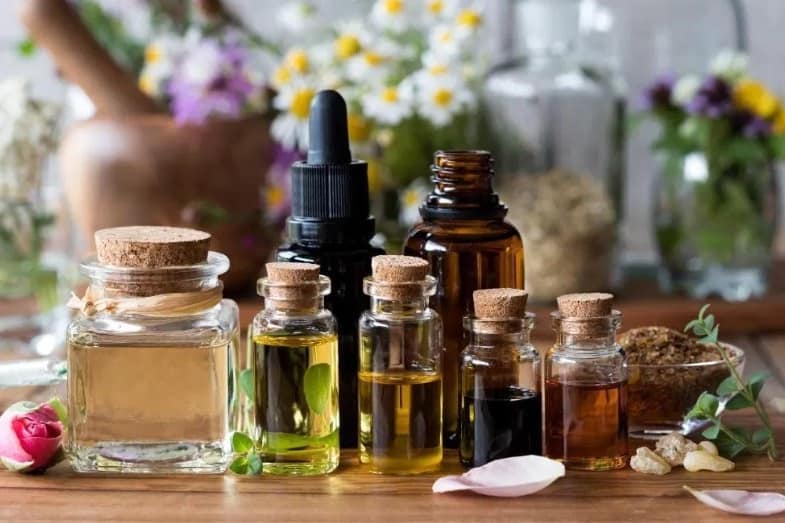
Disclaimer: The treatments below are just suggestions and shouldn’t be considered a substitute for medical advice. As soon as you develop symptoms, make an appointment to see a doctor for proper diagnosis and treatment.
1. Put a Cold Compress
Cold therapy offers several benefits. It has a numbing effect that temporarily relieves pain and itching. By constricting your blood vessels, it slows down the flow of blood to the affected area, which in turn reduces swelling and redness.
Before you do a cold compress, here are a few reminders:
- Don’t place ice or anything cold directly to your skin. Always set a barrier, like a towel, between the two to prevent frostbite.
- Keep it within 20 minutes at a time. If you need to do it again, allow one to two hours to pass.
- If the area is still painful or inflamed after three days, see your doctor if possible.
2. Make Colloidal Oatmeal
Colloidal oatmeal refers to finely ground whole oats (Avena sativa) that are dissolved in water to be used as a moisturizer and barrier against skin irritants. Studies have shown that oats contain avenanthramides, which have anti-inflammatory and antioxidant properties.
According to DermNet NZ, colloidal oatmeal can be used as a treatment for insect bites, chickenpox, dermatitis, dry skin, and poisonous plant reaction.
Colloidal oatmeal is widely used in skincare products, but if you want, you can easily make it at home. Here’s how:
- Crush your rolled oats—not the sugar-filled and artificially flavored breakfast oatmeal—using a spice grinder or food processor.
- To make a paste, simply add water to a small amount of oatmeal powder. Avoid making more than you expect to use right away.
- Or, add 10-16 tablespoons of oatmeal powder to your bathwater.
Let your skin soak in the colloidal oatmeal, and big or small pink spots on skin should visibly reduce in about a week of daily use.
3. Increase Your Vitamin C Intake
There are different reasons why vitamin C is good for your skin and overall health. For instance, it helps neutralize the damaging effects of free radicals, which include skin discoloration, wrinkles, and broken capillaries (tiny blood vessels).
The 2000 study by the Foundational Medicine Review found that taking at least 2 grams (2,000 milligrams) of vitamin C every day may help treat allergies. [4]
Vitamin C works by stopping the release of histamine—the compound that’s responsible for producing allergic symptoms—and making sure it’s effectively broken down by the body.
Some of the best sources of vitamin C besides oranges include:
- Broccoli
- Cantaloupe
- Cauliflower
- Grapefruit
- Guava
- Kale
- Kiwi
- Papaya
- Red pepper
- Strawberries
- Sweet potato
- Tomatoes
4. Make a Moist Warm Compress
You can use warm compresses to drain pus-filled spots and reduce pain, swelling, and itching. The American Academy of Dermatology suggests doing it 3-4 times daily for 15-20 minutes each time.
How to prepare and perform a moist warm compress:
- Wash your hands using regular soap.
- Clean the affected area using any skin disinfectant.
- Place a gauze, face towel, or any small towel in a bowl with warm water. The water shouldn’t be warmer than 120°F (48.89°C) for adults and 100°F (37.8°C) to 105°F (40.56°C) for babies and children. [5]
- Apply the compress to the pink patches on skin, or perhaps a single pink spot on skin. Don’t leave it on your skin for more than 20 minutes. If it helps you feel better, you can do this more than four times daily.
5. Try Essential Oils
Each essential oil has different ways of treating skin diseases and promoting clearer, younger-looking skin. Below are just four examples of essential oils that are good for your skin:
- Tea Tree Oil (Melaleuca Oil) – This essential oil is known for its antibacterial, antifungal, and anti-inflammatory properties. It’s commonly used to treat contact dermatitis, acne, and insect bites.
- Lavender (Lavandula angustifolia) Essential Oil – This gentle essential oil isn’t just great for relaxing and getting a night of better sleep. It’s also an effective remedy for skin conditions that cause itching, inflammation, and pain.
- Sandalwood Essential Oil – Like tea tree and lavender essential oils, this sweet-smelling essential oil is great for infections, wounds, or itching that’s caused by inflammatory skin diseases and insect bites.
- Rose Essential Oil – If you’re feeling depressed or stressed out, use this essential oil. It also helps hydrate the skin, minimize the appearance of scars, and treat skin conditions, such as eczema.
Reminders:
- Dilute your essential oils before use. A good rule of thumb is to dilute one teaspoon of carrier oil together with one drop of essential oil (e.g., virgin coconut oil, almond oil, and avocado oil).
- Also, it is wise to perform a skin patch test first. Spread a drop of diluted essential oil on your inner forearm, and then wait for 30 minutes to 24 hours for any allergic reaction.
Conclusion – Pink Spots on Skin
So, to recap, are you wondering why you have pink spots on skin, or perhaps a single pink spot on skin? Pink spots on the skin are medically referred to as petechiae. These spots appear due to tiny blood vessels leaking into the skin.
What are the causes and treatments? Excessive sun exposure, skin injury, straining, bug bites, and bacterial or viral skin diseases are just some possible causes of petechiae (red or pink spots on the skin).
The right treatment differs depending on the type and severity of the condition. Sometimes, you don’t need to do anything unless the spots cause discomfort or become unsightly. In some cases, dabbing cotton balls with lemon juice to the affected areas might help.
Related reading:
Yellow Spots on Skin: Causes and Treatments
Uneven Skin Tone – How to Even It Out? 11 Tips



![Bleeding Pore on Nose [11 Possible Causes and Treatments] bleeding pore on nose](https://skincaregeeks.com/wp-content/uploads/2021/04/bleeding-pore-on-nose-150x150.jpg)
![Bruise Itches [Causes and Treatments for an Itchy Bruise] bruise itches](https://skincaregeeks.com/wp-content/uploads/2021/04/bruise-itches-150x150.jpg)
![Neutral Skin Tone Defined [and Best Colors for Neutral Skin] neutral skin tone](https://skincaregeeks.com/wp-content/uploads/2021/05/neutral-skin-tone-150x150.png)

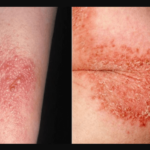

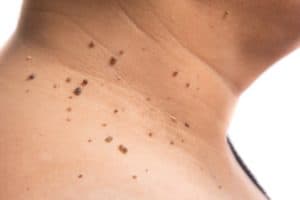
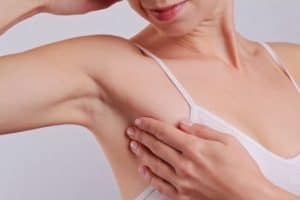
![Read more about the article Bruise Itches [Causes and Treatments for an Itchy Bruise]](https://skincaregeeks.com/wp-content/uploads/2021/04/bruise-itches-300x200.jpg)